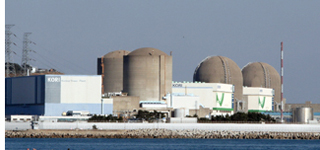Safe nuclear reactors

Despite the magnitude 5.4 earthquake that hit the southeastern city of Pohang, nuclear reactors close to the area were not affected at all. [YONHAP]
I do not think science is always right, but I cannot accept the environmentalists’ serious neglect of science. There is no causal relationship between the fact that the Korean Peninsula is not a safe zone from earthquakes and their conclusion that all nuclear plants must be shut down.
Is it best to get rid of everything that we fear? No. It is the human way to overcome fear with observation, reason and science. We cannot destroy the accomplishments of civilization with fear. When shallow politicians win votes and popularity by stoking public fear, the people will regress and the country will be ruined.
The best way to counter earthquakes is not giving up on construction plans, but securing quake-resistant designs. In Pohang, buildings built with strict quake-proof designs suffered no damage. The three-story disability welfare center in a northern district of Pohang — certified by the Ministry of Interior and Security for its quake-resistant design — only had a couple of minor cracks. Not a single book fell off the bookshelves inside the building. But buildings of Handong University, located only 3.4 kilometers (2.1 miles) away from the center, suffered major damage because they did not use quake-proof designs. Exterior walls collapsed and interior walls were twisted.
Nuclear power plants are the buildings designed with the most severe quake-proof elements. I visited the construction site of the Shin Kori 5 and 6 reactors. As horizontal and vertical steel beams were packed in extremely tightly for the reactor buildings, it seemed there was no room to pour any concrete. Their diameter was 5.6 centimeters (2.2 inches). The fact that the Postech buildings — which suffered no damage during the recent earthquakes — used steel beams with a 1-centimeter diameter shows how sturdy the reactor designs are.
The key of the quake-proof design is how the steel beams are placed. The horizontal beams play a more important role than the vertical ones. How closely the horizontal beams are placed together decides the quake-resistant nature of a building. Scientifically, most of the longitudinal waves of a quake are absorbed by gravity, but the transverse waves can only be deterred by horizontal beams.
There is one thing more important than a quake-proof design. That is strictly following the plan when building a structure. Nuclear plants from around the world are being monitored by government agencies on multiple levels to manage their construction process. As nuclear plants are the best-designed quake-proof buildings, the activists must stop arguing to scrap all plants whenever a quake takes place.
Nuclear plants in Korea have a higher density of steel beams than the 0.555-kilometer-high Lotte World Tower. Worrying about the safety of nuclear plants when a quake takes place is natural, but it is not something we must worry about more than the Lotte World Tower. The recent discussions on the fate of nuclear plants already revealed that the Fukushima nuclear disaster was not caused by the earthquake but by the subsequent flooding. Onagawa Nuclear Power Plant was actually located closer to the epicenter, and yet it was used as a shelter for residents.
I am not saying that nuclear plants are 100 percent safe and we should not worry about them. I am asking the activists to stop their propaganda to demand the removal of all nuclear plants whenever a quake takes place. If they are truly worried about public safety, it is more honest and constructive for them to push forward a movement aimed at improving the quake-proof design of schools, hospitals and homes.
JoongAng Ilbo, Nov. 20, Page 34
*The author is a columnist of the JoongAng Ilbo.
Chun Young-gi










with the Korea JoongAng Daily
To write comments, please log in to one of the accounts.
Standards Board Policy (0/250자)